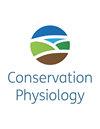红鲑幼鱼的生理状况推断其栖息地选择
IF 2.6
3区 环境科学与生态学
Q2 BIODIVERSITY CONSERVATION
引用次数: 0
摘要
幼年鲑鱼在河口停留的时间因种群之间和种群内部的差异而不同,有些个体几个小时就能通过河口,而有些个体则在河口停留数月之久。个体生理条件(如体型、储存能量和渗透调节功能)的潜在差异可能会导致个体对河口栖息地选择的差异。在此,我们研究了从不列颠哥伦比亚省(BC)弗雷泽河奇尔科湖(Chilko Lake)开始下游洄游时截获的红鲑鱼(Oncorhynchus nerka)幼体在选择河口和海洋栖息地时生理条件的变化所起的作用。在下游洄游期间的三个时间间隔内,对淡水中未喂食的幼鱼进行了行为盐度偏好实验,这三个时间间隔分别代表出湖时的洄游阶段以及预计进入河口和海洋的时间(分别为出湖后 0 周、1 周和 3 周)。总体而言,盐度偏好行为在三个时间段内均有变化,这与从河流到河口再到海洋的预期过渡一致。此外,个体的生理状况也会影响栖息地的选择。蜕皮鱼的条件因子(K)和能量密度与河口和海洋外迁阶段的盐度偏好行为呈正相关,但在出湖阶段则不相关。我们的研究结果表明,蜕皮鱼到达河口时的生理状况会影响其洄游行为和生境选择。这为野生太平洋鲑幼鱼的生理、行为和洄游之间的时间依赖性相互作用提供了证据,幼鱼的饲养条件会影响幼鱼的能量状态,而能量状态又会影响幼鱼在下游洄游过程中对栖息地的选择。这对保护洄游物种的意义在于,中途停留栖息地的相对重要性可能会随着初始条件的变化而变化。本文章由计算机程序翻译,如有差异,请以英文原文为准。
Physiological condition infers habitat choice in juvenile sockeye salmon
The amount of time that juvenile salmon remain in an estuary varies among and within populations, with some individuals passing through their estuary in hours while others remain in the estuary for several months. Underlying differences in individual physiological condition, such as body size, stored energy and osmoregulatory function, could drive individual variation in the selection of estuary habitat. Here we investigated the role of variation in physiological condition on the selection of estuarine and ocean habitat by sockeye salmon (Oncorhynchus nerka) smolts intercepted at the initiation of their 650-km downstream migration from Chilko Lake, Fraser River, British Columbia (BC). Behavioural salinity preference experiments were conducted on unfed smolts held in fresh water at three time intervals during their downstream migration period, representing the stage of migration at lake-exit, and the expected timing for estuary-entry and ocean-entry (0, 1 and 3 weeks after lake-exit, respectively). In general, salinity preference behaviour varied across the three time periods consistent with expected transition from river to estuary to ocean. Further, individual physiological condition did influence habitat choice. Smolt condition factor (K) and energy density were positively correlated with salinity preference behaviour in the estuary and ocean outmigration stages, but not at lake-exit. Our results suggest that smolt physiological condition upon reaching the estuary could influence migratory behaviour and habitat selection. This provides evidence on the temporally dependent interplay of physiology, behaviour and migration in wild juvenile Pacific salmon, with juvenile rearing conditions influencing smolt energetic status, which in turn influences habitat choice during downstream migration. The implication for the conservation of migratory species is that the relative importance of stopover habitats may vary as a function of initial condition.
求助全文
通过发布文献求助,成功后即可免费获取论文全文。
去求助
来源期刊

Conservation Physiology
Environmental Science-Management, Monitoring, Policy and Law
CiteScore
5.10
自引率
3.70%
发文量
71
审稿时长
11 weeks
期刊介绍:
Conservation Physiology is an online only, fully open access journal published on behalf of the Society for Experimental Biology.
Biodiversity across the globe faces a growing number of threats associated with human activities. Conservation Physiology will publish research on all taxa (microbes, plants and animals) focused on understanding and predicting how organisms, populations, ecosystems and natural resources respond to environmental change and stressors. Physiology is considered in the broadest possible terms to include functional and mechanistic responses at all scales. We also welcome research towards developing and refining strategies to rebuild populations, restore ecosystems, inform conservation policy, and manage living resources. We define conservation physiology broadly and encourage potential authors to contact the editorial team if they have any questions regarding the remit of the journal.
 求助内容:
求助内容: 应助结果提醒方式:
应助结果提醒方式:


